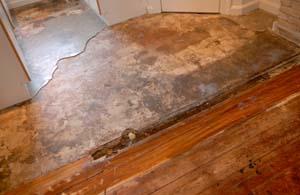6 Water Damage Remediation Do's and Don'ts.
6 Water Damage Remediation Do's and Don'ts.
Blog Article
How do you actually feel when it comes to Reducing Your Risk Of Water And Fire Damage At Home?

Water provides life, yet water breach on some components where it's not meant to be can result in damages and also hassle. It can peel away the surface area and erode the product's foundation if the water permeates into your framework. Mold and also mildew additionally flourish in a wet atmosphere, which can be dangerous for your and your family members's health. Furthermore, homes with water damages smell stuffy and old.
Water can originate from numerous resources like hurricanes, floodings, ruptured pipes, leaks, as well as sewage system issues. If you have water damages, it's far better to have a working knowledge of safety and security preventative measures. Below are a few guidelines on exactly how to manage water damage.
Do Prioritize House Insurance Coverage Insurance Coverage
Seasonal water damage can come from floods, seasonal rains, as well as wind. There is additionally an event of a sudden flood, whether it came from a defective pipe that unexpectedly bursts into your home. To safeguard your house, obtain residence insurance that covers both acts of God such as natural disasters, and emergencies like broken plumbing.
Don't Forget to Turn Off Utilities
When disaster strikes and you're in a flood-prone area, turn off the main electrical circuit. Shutting off the power avoids
When water comes in as water serves as a conductor, electric shocks. Do not forget to shut off the primary water line valve as a means to stop more damages.
Keep your furniture secure as they can relocate around and create extra damage if the floodwaters are getting high.
Do Keep Proactive and also Heed Climate Informs
If you live in an area tormented by floods, remain prepared as well as proactive at all times. Listen to the news as well as discharge warnings if you live near a body of water like a lake, river, or creek .
Don't Disregard the Roofing System
Prior to the weather turns terrible and also for the worse, do a roof examination. A better practice is to have a yearly roof covering evaluation to minimize future problems and complicated problems. A great roof covering with no holes as well as leakages can be a good shield against a device and also the rainfall to avoid rain damage. Your roofing professional must care for the faulty gutters or any other signs of damage or weakening. An assessment will stop water from streaming down your wall surfaces as well as saturating your ceiling.
Do Pay Attention to Small Leakages
There are red flags that can attract your interest as well as suggest to you some weakened pipelines in your residence. Indications of red flags in your pipes consist of bubbling paint, peeling off wallpaper, water touches, water spots, or dripping audios behind the walls. Repair work and evaluate your plumbing repaired before it results in enormous damage to your residence, financial resources, and an individual headache.
Do Not Panic in Case of a Ruptured Pipeline
Timing is vital when it comes to water damage. If a pipe bursts in your residence, instantly shut off your primary water shutoff to cut off the source as well as prevent more damages. Call a reliable water damage repair professional for aid.
Water gives life, but water invasion on some parts where it's not meant to be can result in damages and trouble. In enhancement, residences with water damages smell old and mildewy.
Seasonal water damage can come from floods, seasonal rains, as well as wind. Indicators of red flags in your pipes include gurgling paint, peeling wallpaper, water touches, water stains, or dripping sounds behind the wall surfaces. If a pipeline ruptureds in your house, right away shut off your major water valve to cut off the resource and avoid even more damages.
Water Damage Do's and Don'ts
Do's
Always use rubber gloves to protect your hands & rubber boots to protect your feet and legs. Damage from water and bacteria growth can begin within hours. Call for professional help. Remove as much water as possible by mopping and blotting with sponges. Pull up wet rugs and carpets if hardwood floors are below. Lift draperies off the floor, loop through a coat hanger and place the hanger on the drapery rod. Wipe furniture, prop up wet furniture cushions for even drying and place aluminum foil under furniture legs. Move photos, paintings, art objects, computers, other electronics and valuables to a safe, dry location. Do not remove books from shelves. Pack them tightly to prevent page warping until a restoration professional can begin this specialized drying. Ventilate wet areas. Turn on air conditioning for faster drying in summer (only if there is no visible mold) and winter, alternate cycles of opened windows and heating. Also, open drawers, closets and cabinet doors to enhance drying. Don'ts
Do not enter rooms where there is wet and sagging ceiling! Do not enter a room with standing water until electricity has been turned off. Do not use a regular household vacuum to remove water. Use heat to dry closed building interiors. Mildew and more moisture damage can occur. Do not use electrical appliances while on wet carpet or flooring. Do not disturb visible mold. https://www.myknowledgebroker.com/blog/personal-insurance/water-damage-dos-and-donts/

As a passionate reader about 5 Home Safety Tips To Reduce The Risk Of Fire And Water Damage, I imagined sharing that editorial was worth the trouble. So long as you liked our blog posting plz don't forget to pass it around. Thanks a lot for your time. Come back soon.
Report this page